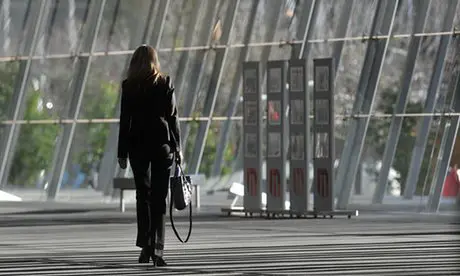Female Australian authors are being shunned by professional book reviewers, while there is also an underrepresentation of women reviewing books, a literature expert from the Australian National University (ANU) told Xinhua on Friday.
An ANU study delved into the prevalence of gender bias in Australian literature, after similar studies conducted in other western nations found an "unconscious" gender bias within book reviews, lowering the overall success rate of female authors.
It said that two thirds of published authors in Australia were women, but two thirds of the books being reviewed in mainstream publications were written by men.
The study took in 30 years worth of data and found the ratio remained "largely the same" over that period, and pointed to an "unconscious gender bias" in Australian literature.
Dr Julieanne Lamond, literary expert from ANU's School of Literature Languages and Linguistics, told Xinhua that her team found a "long-standing association between literary importance and male writers" not only in Australia but overseas, after the results of British and American studies inspired the ANU to look at the representation of female authors in Australia.
"(The overseas studies) started counting the proportion of male and female writers and reviewers in big flagship publications such as the New Yorker and The Times Literary Supplement, and they found these had significant gender disparity in both the gender of writers and the book reviewers," Lamond, lead author of the study, told Xinhua on Friday.
"So we drew on some of that information in our study."
She said that a number of English-speaking western nations had similar proportions of gender bias within the mainstream media, but admitted regional papers in Australia were much better at a balanced coverage.
"Australia is quite similar to the American and English publications. Perhaps not as bad in some respects are our regional broadsheets compared to our flagship national papers when it comes to gender representation.
"It's hard to make that comparison across the board. The general disparity in Australian papers is pretty similar to those overseas."
While female authors have long been underrepresented in book reviews and in book reviewing circles, Lamond said that glass ceilings were beginning to break down on the back of a strong public push for equality in everyday life.
She said that female-focused literary prizes such as the Stella Prize were helping to recognize the achievements of female writers, something Lamond said would soon help sales for female authors and 'right' the gender imbalance plaguing the Australian literary landscape.
"I think the Stella Prize has made a big difference to peoples' thinking about women's writing," Lamond told Xinhua.
"The (latest) Stella count (of female-reviewed books) should be coming out soon, and I think it will be really interesting to see if there has been any change.
"There have been small shifts (recently). What we found is here was a small increase in the number of books by women being reviewed but no increase in terms of the gender of reviewers."
"When it comes to ideas about critical authority about who can make judgements about a book, we still go to a male authority."
Lamond said the rise of peer reviewing websites such as Amazon and Goodreads were also enabling everyday consumers to bypass professional book reviews and add their own opinions to the internet, allowing for greater exposure for female writers.
She said it was contributing to equality, but wasn't sure if peer reviews would have the "power to make-or-break" a book's popularity in the same way a featured review might.
"It's a more level playing field online, but it's a question as to whether that kind of reviewing has the power to make-or-break a novel in the way that the 'old fashioned' ways of reviewing has."
(APD)
 简体中文
简体中文

